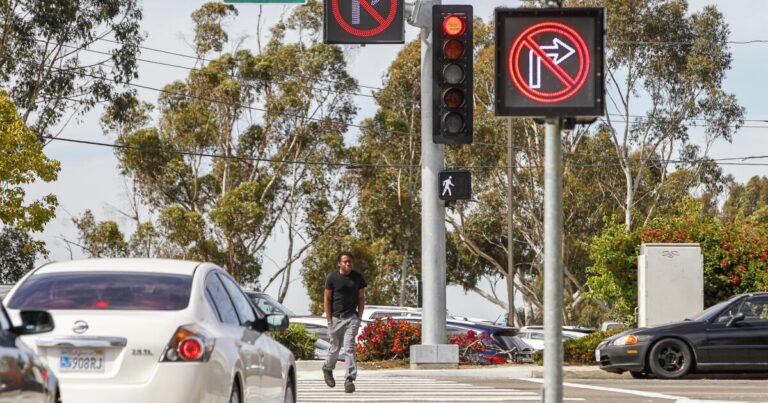Driving in California can be confusing for many, especially regarding right turns at red lights. Questions like can you turn right on red in California? often come up—and the short answer is yes, but only under certain conditions. Instead of diving deep into every detail, we’ll give a quick overview to help drivers stay alert and compliant, especially in busy cities like Sacramento.
Drivers must always come to a complete stop before making a right turn on red and yield to pedestrians, bicyclists, and oncoming traffic. Additionally, “No Turn on Red” signs—frequently posted in high-foot-traffic areas or where visibility is limited—override the general rule and prohibit right turns at red lights.
Understanding the basics of these laws is crucial to avoid citations and ensure safe driving. For a more in-depth look at California’s right-on-red rules, be sure to explore resources that break down the topic thoroughly.
Basic Rule: Right Turn on Red
A driver can turn right on a red light in California after stopping. Unless otherwise posted, that rule prohibits a right turn on red at a specific intersection. Drivers should yield to pedestrians and other vehicles on the right-of-way before moving on so that traffic runs for you safely and without any obstruction.
What Not to Do While Driving in Tight Circles
Drivers must wait for the light to turn green if a “No Turn on Red” sign is at an intersection. This type of sign typically appears in areas with high pedestrian traffic or limited visibility. However, drivers need to constantly be on the lookout for these signs to avoid violations.
Stopping Before Turning
You must come to a complete stop before turning right on red. That means you cannot roll through the intersection, even without traffic, or you could face fines and penalties. Come to a stop at, or behind, the line where the crosswalk begins. The short pause allows drivers to be sure the way is clear of pedestrians and other vehicles coming in the opposite direction before completing the turn.
Yielding for Pedestrians and Traffic
The most crucial element in turning right on red is yielding to pedestrians. Not yielding to pedestrians can cause accidents and is a traffic offense, as pedestrians have the right of way. Be aware of bicyclists and other vehicles that may have the right of way ahead of you. It is also essential for the driver to ensure that there is no oncoming traffic or other possible obstruction before they turn.
Notes and Special Circumstances
Others have particular laws regarding this when it comes to intersections. For instance, some intersections have exclusive right-turn signals. They know when it is okay to make the turn and will signal it to you. Everyone needs to understand and adhere to these signals as a unique aspect of driving.
Safety Considerations
Safety is a notable issue when turning right at red lights. Drivers must stay vigilant and aware of pedestrians, cyclists, and other vehicles. Accidents can be avoided by checking mirrors and blind spots.
Penalties for Violations
If you violate any right-turn-on-red law in California, you could be penalized with impounding costs, loss of license, fines, points against your driving record, and higher insurance rates. Grasping the penalties and legal fines associated with violations is an encouraging reminder to observe the guidelines.
Role of Traffic Cameras
Traffic cameras monitor intersections in many areas. These cameras can catch red light right turn violations. Knowing that these monitoring systems are out there might make you think twice before running a light or speeding through a known speed trap, thus minimizing the chances of a ticket.
Educating New Drivers
Drivers must learn to follow the rules and responsibilities of right turns on red. Instructors commonly teach these laws in driver education programs, but experience is the best teacher. Utilize experienced drivers (e.g., parents) to teach the importance of patience, observance, and law.
Influence of Urban vs. Rural Context
There are differences in handling right turns on red, especially in urban and rural settings. Cities with busier sidewalks might post more “No Turn on Red” signs. Drivers must remain cautious on rutted roads and congested intersections. Understanding the context of the driving environment is better for making informed decisions.
Conclusion
Navigating the rules for right turns on red lights in California requires vigilance and a safety-focused mindset. Knowing the fundamental laws, the exceptions, and the safety aspects will help drivers make the proper decision while on the road. Following these laws can prevent penalties and help ensure everyone on the road is safe. Whether you live in a city area or are just visiting, it is up to every driver to stay current on these laws.


